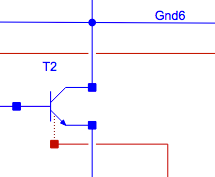Announcing Wolfram SystemModeler 4.2
Explore the contents of this article with a free Wolfram SystemModeler trial. Today marks the release of Wolfram SystemModeler 4.2.
I’ll outline some of the new features and improvements we’ve done since Version 4.1. You could say that there are three main pieces to this release: usability, performance, and integration. Let’s take them one by one.

Usability
The first improvement you’ll notice as a user opening the product is that the diagram area is easier to understand, with crossing-line detection and joint connection points marked with solder dots:

There’s also a collection of new, specialized editors—for example, an editor that lets you edit arrays in a table view:

If you’re selecting a color, a color picker is shown:

I find it really helpful to have an expression editor that pops up when editing longer expressions for a variable or parameter:

When picking files as inputs to model, there’s a file dialog window. This prevents user errors when selecting data files:

If you are modeling 3D systems, a new trajectory marker is available in the animation window. It traces the paths of the parts that you are interested in. It’s neat, and you can easily see the motions of parts with just a single picture:

Performance
For Windows users, the new release is a 64-bit application, supporting Visual Studio Express 2015. This, together with improvements to the core of SystemModeler, will improve the compile time for models, especially larger models, drastically. As an example, I’ll time the transformation from model code to simulation for some models in the ScalableTestSuite Modelica library. This is on a relatively modest desktop computer:

SystemModeler is two to ten times faster in this release, as compared to SystemModeler 4.0!
Integration
SystemModeler keeps getting more integrated with the Wolfram Language. It’s now possible to turn Wolfram Language data into SystemModeler components. Here I take some data from a databin created with the Wolfram Data Drop:

I save this temperature in a TimeSeries object:

And I create a component that behaves like this data:

I can now use this like any other component in SystemModeler.
One of my favorite features as a heavy user of SystemModeler and the Wolfram Language is the completion of model names in the SystemModeler Link package. If I, for example, start typing “WSMSimulate[“ModelPlug.Ex”,” the system fills in the available models:

This really speeds up my work in Mathematica and SystemModeler.
A full list of new features for SystemModeler 4.2 is available here.
Download this post as a Computable Document Format (CDF) file.



Comments